As Kurt Tucholsky said, “Noise is the sound of others.” When it comes to offices, many employees would agree with this statement. Open office structures and the use of reverberant materials such as glass or concrete promote poor room acoustics. If you want to facilitate the ability to concentrate and keep your employees healthy, you should take the (room) acoustics into account in your planning.
Please also read

Acoustic parameters
First of all, measures must be taken to positively influence the reverberation time. Put simply, this is the time it takes for sound to become inaudible. If it is too long, the room appears reverberant, which is particularly annoying during telephone calls or video conferences. In addition, rooms with a long reverberation time are quickly perceived as too loud. If the reverberation time is too short, the hearing impression is uncomfortably dull, and speech can then be understood well even at a long distance.
The reverberation time therefore also influences the second important parameter of acoustics in the office, the intelligibility of speech. It often becomes a problem in rooms where several people work. If the speech intelligibility is too low, for example because it is too loud in a room overall, it becomes difficult to understand one’s colleagues. If it’s too high, every word spoken in a room can be heard over long distances. Concentrated work is then no longer possible. The speech transmission index (STI) is generally used to measure these effects. We will consider this index again later on.
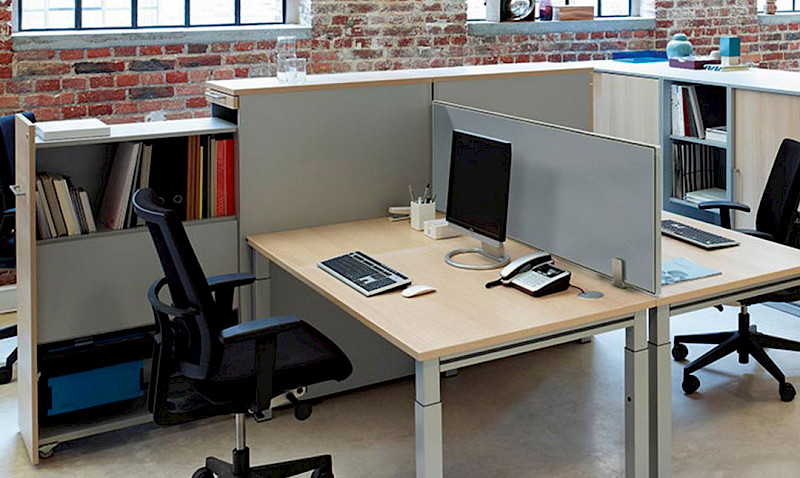
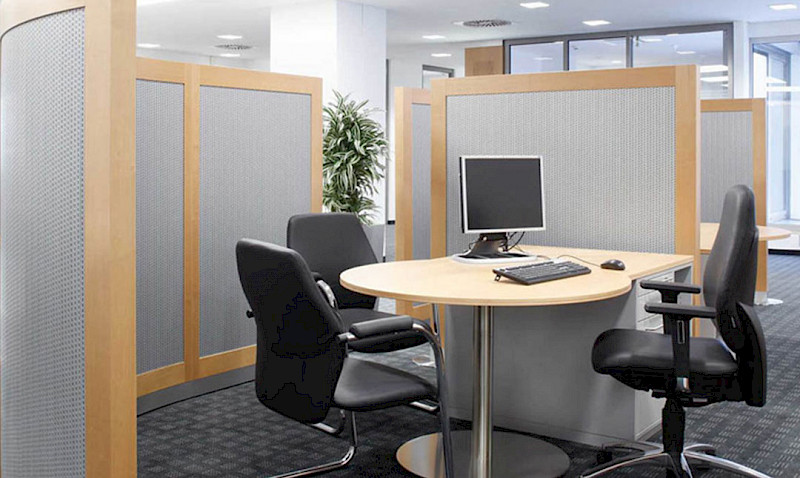
Effectiveness of individual measures
The best way to reduce speech intelligibility is to shield workplaces from one another. You can use partitions for this, but also cupboards that are placed between the individual workstation groups. At the same time, this furniture can be used to give each employee a greater feeling of privacy. If the line of sight between certain workplaces is to be maintained, you can use partition walls made entirely or partially of transparent materials.
The positive effect of screens on speech intelligibility in offices has been proven. However, not all measures have the same effect. For example, a simple table attachment is of little use for the acoustic shielding of desks that face each other. The best results are achieved here with screens that stand on the floor and are 1.40 m or taller. Moreover, they should surround the workplaces on three sides and be covered with sound-absorbing materials. To separate workstations that are further away, you can, for example, use cupboards with fabric back walls.
The following values, determined in cooperation with Akustikbüro Oldenburg, show the effects that can be achieved with the measures described. The previously mentioned parameter STI was used for this purpose. An STI score of 0 means speech is absolutely unintelligible. A value of 1 would mean that speech is 100% understandable without any effort. An STI of 0.6 or more is considered to be good speech intelligibility. If employees are not to be disturbed by phone calls or other conversations at neighbouring workplaces, the STI should be no higher than 0.5.

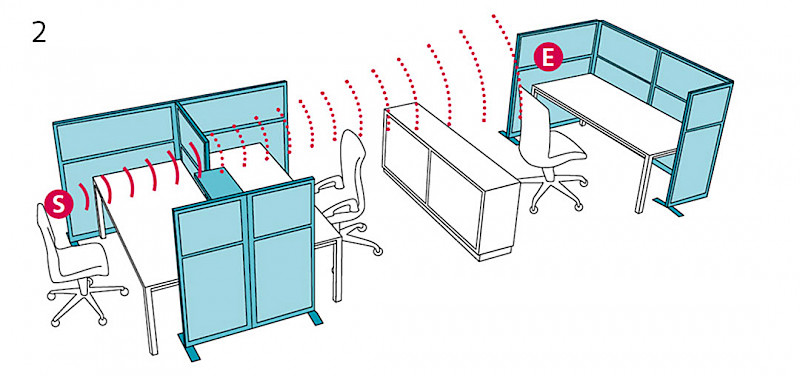

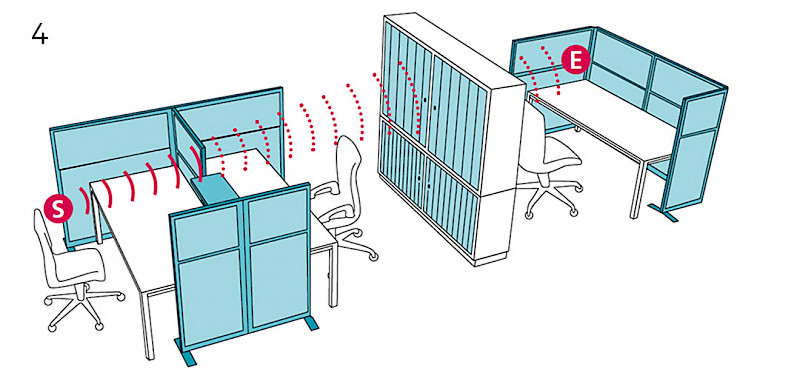
You can listen to the described effects at https://www.hund-moebel.de/kompetenzen/akustik/.



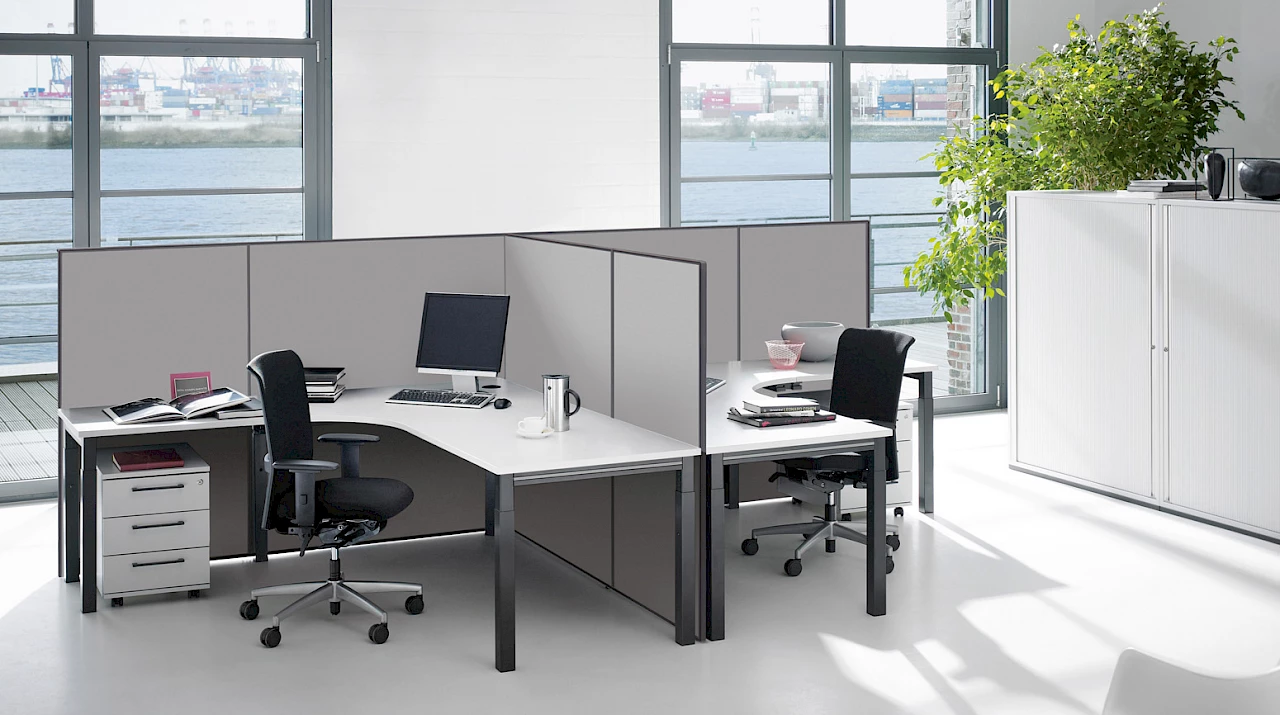
 Hund Möbelwerke
Hund Möbelwerke 
